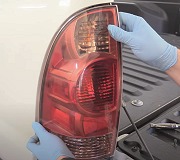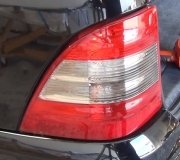Dandy observation. It normally takes multiple replies back and forth to get people to this point. You already did the first step which is getting a new switch. Now look at the connector and you will see a minimum of two overheated, blackened terminals, and possibly more. Make a drawing so you will not forget where each of those wires goes. You are going to find the plastic connector body is melted around those terminals too. Cut that part of the body away for each melted terminal, then reconnect the plug that way.
For each overheated terminal that is hanging loose now, you will find the first four inches of those wires is quite hard and will not bend easily. That is from being hot, and solder will not adhere to that. Cut that four inches off, then splice on new pieces of wire of the same gauge. Do not twist the wires together like we do with house wiring. Instead, slide the strands into each other, then push down any sharp points that are sticking out. Solder those splices, then check again for any sharp points. Press those down so they will not poke through the heat-shrink tubing, which is the next step. Seal those splices with heat-shrink tubing. For this application you do not need the moisture-proof stuff. Never use electrical tape in a car as it will unravel into a gooey mess on a hot day.
Use the correct size universal crimp-on terminal on the end of each wire, but once crimped, also solder them to insure a good connection. Gently squeeze each terminal on the end so it makes a tighter connection. That is to have less resistance between the terminals. It is the resistance that creates heat when current flows through it, and that heat degrades the connection and makes it have more resistance. The circle continues until the terminals overheat and cause intermittent problems.
Plug in each terminal onto the switch individually where you cut the plastic connector body away. When you are done, double-check that the wires have a little slack in them so none are being pulled on which could also lead to bad connections.
This is a common repair for head light switches, ignition switches, and sometimes dimmer switches.
Friday, May 4th, 2018 AT 7:30 PM



